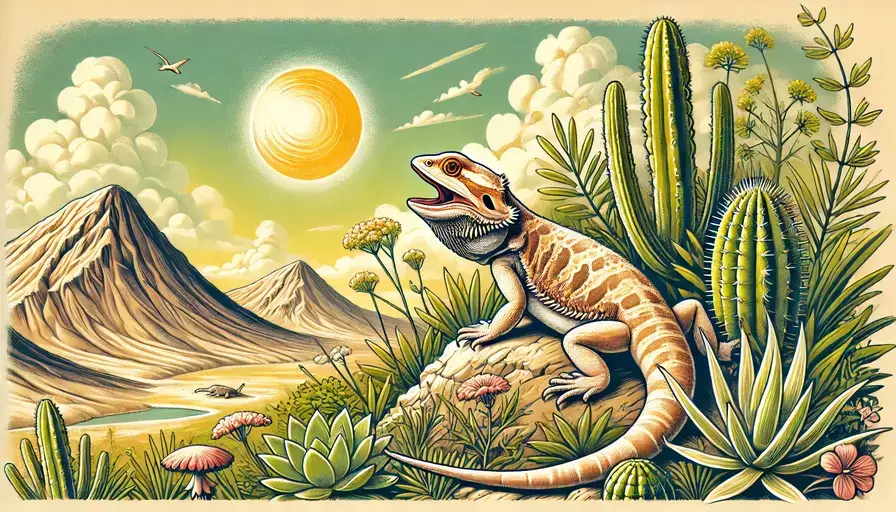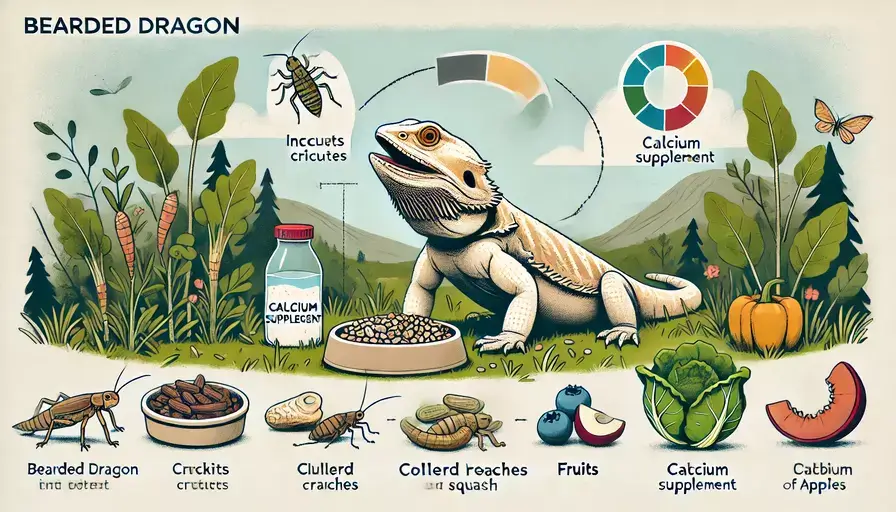Bearded dragon care is crucial for ensuring these fascinating reptiles remain healthy and happy in captivity. So how should we look after a bearded dragon? Bearded dragons are captivating and relatively easy-to-care-for reptiles, making them a popular choice for both novice and experienced pet owners.
Proper bearded dragon care involves understanding their dietary needs, habitat requirements, and general health to ensure they thrive in captivity.
In this comprehensive guide, we’ll delve into the essential aspects of bearded dragon care, offering expert tips and best practices to help you provide the best environment and nutrition for your scaly friend.
Understanding Bearded Dragons
Before diving into the specifics of bearded dragon care and how to look after a bearded dragon, it’s crucial to understand what makes bearded dragons unique. Native to Australia, these reptiles are known for their distinctive beard-like throat flap, which they can puff out when threatened or excited.
Bearded dragons are diurnal, meaning they are active during the day and sleep at night, which aligns well with human schedules.

Setting Up the Perfect Habitat
Creating an ideal habitat is the cornerstone of effective bearded dragon care. Their enclosure should mimic their natural environment as closely as possible to ensure their well-being.
Choosing the Right Enclosure
Size and Type: Great bearded dragon care require a spacious enclosure to thrive. A 40-gallon tank is a good starting size for juveniles, but adults will need a larger setup, ideally a 75-gallon or more.
Glass terrariums are commonly used due to their visibility and ease of cleaning. Ensure the enclosure has a secure lid to prevent escapes.
Temperature and Lighting: Bearded dragons are ectothermic, meaning they rely on external heat sources to regulate their body temperature. Provide a temperature gradient in the enclosure with a basking area reaching 95-105°F (35-40°C) and a cooler area around 75-85°F (24-29°C).
Use a combination of heat lamps and ceramic heaters to achieve this gradient. Additionally, UVB lighting is crucial for their health, as it aids in calcium absorption and prevents metabolic bone disease. A UVB bulb should be replaced every 6-12 months, even if it still lights up.
Substrate and Decor: Choose a substrate that is easy to clean and safe for your bearded dragon. Reptile carpet, tile, or paper towels are good options. Avoid sand or loose substrates, which can cause impaction if ingested.
Provide hiding spots, climbing branches, and basking platforms to enrich their environment and cater to their natural behaviors and achieve perfect bearded dragon care.

Feeding Your Bearded Dragon – Looking After Your Bearded Dragon
A balanced diet is essential for maintaining a healthy bearded dragon care. Their diet consists of both plant and animal matter, and it’s crucial to offer a variety of foods to ensure they receive all necessary nutrients.
Insects
Types of Insects: Feed your bearded dragon a variety of live insects, such as crickets, dubia roaches, and mealworms. Insects should be appropriately sized—about the width of your dragon’s head—to prevent choking. Gut-loading the insects (feeding them nutritious food before offering them to your dragon) and dusting them with calcium and vitamin D3 supplements will ensure your bearded dragon gets the essential nutrients.
Feeding Frequency: Juvenile bearded dragons require more frequent feedings compared to adults. Offer insects 2-3 times daily to juveniles and once daily to adults. Ensure the insects are fresh and free from pesticides or harmful chemicals.
Vegetables and Fruits
Types of Vegetables: Leafy greens such as collard greens, dandelion greens, and mustard greens are excellent staples in a bearded dragon’s diet. You can also offer other vegetables like bell peppers, squash, and carrots. Chop the vegetables into small, manageable pieces to make it easier for your dragon to eat.
Fruits: Fruits should be offered less frequently due to their high sugar content. Safe options include blueberries, apples (without seeds), and watermelon. Always remove seeds and cut fruits into small pieces.
Hydration: Provide fresh water daily, and consider offering a shallow dish for your bearded dragon to soak in, especially if they seem dehydrated. Proper hydration is crucial for digestion and overall health.

Health and Grooming
Regular health checks and grooming are vital for keeping your bearded dragon in top condition, and ensure safe bearded dragon care.
Signs of a Healthy Bearded Dragon
A healthy bearded dragon will have clear eyes, a well-rounded body, and active behavior. Their skin should be free from parasites or lesions, and they should maintain a healthy appetite and regular bowel movements.
Common Health Issues
Metabolic Bone Disease (MBD): MBD is a common issue caused by calcium deficiency or inadequate UVB exposure. Symptoms include lethargy, tremors, and deformed limbs. Ensure your bearded dragon receives proper UVB lighting and calcium supplementation to prevent this condition.
Parasites: External parasites like mites or internal parasites like worms can affect your bearded dragon’s health. Regularly check for signs of parasites and consult a veterinarian if you notice any unusual symptoms.
Digestive Problems: Issues such as impaction (blockage in the digestive tract) can occur if your bearded dragon ingests inappropriate substrates or food. Maintain a clean enclosure and offer safe, digestible substrates to prevent impaction.
Enrichment and Interaction
Enrichment is essential for your bearded dragon’s mental stimulation and overall happiness. Regular interaction and varied activities help keep them engaged and prevent boredom.
Socialization
Bearded dragons are generally friendly and enjoy interaction with their owners. Regular handling can help them become accustomed to human contact, but always support their body and avoid gripping too tightly. Gentle, positive interactions will build trust and strengthen your bond with your pet.
Environmental Enrichment
Incorporate a variety of toys, climbing structures, and hiding spots in their enclosure to keep them mentally stimulated. Rotate the decor and introduce new items periodically to prevent boredom.
Conclusion
Proper bearded dragon care involves creating an appropriate habitat, providing a balanced diet, monitoring health, and offering enrichment. By understanding and meeting these needs, you can ensure your bearded dragon lives a long, healthy, and happy life. Regularly updating your knowledge and staying informed about best practices will contribute significantly to your pet’s well-being.
For more detailed information on specific aspects of bearded dragon care, be sure to check out our related articles:

